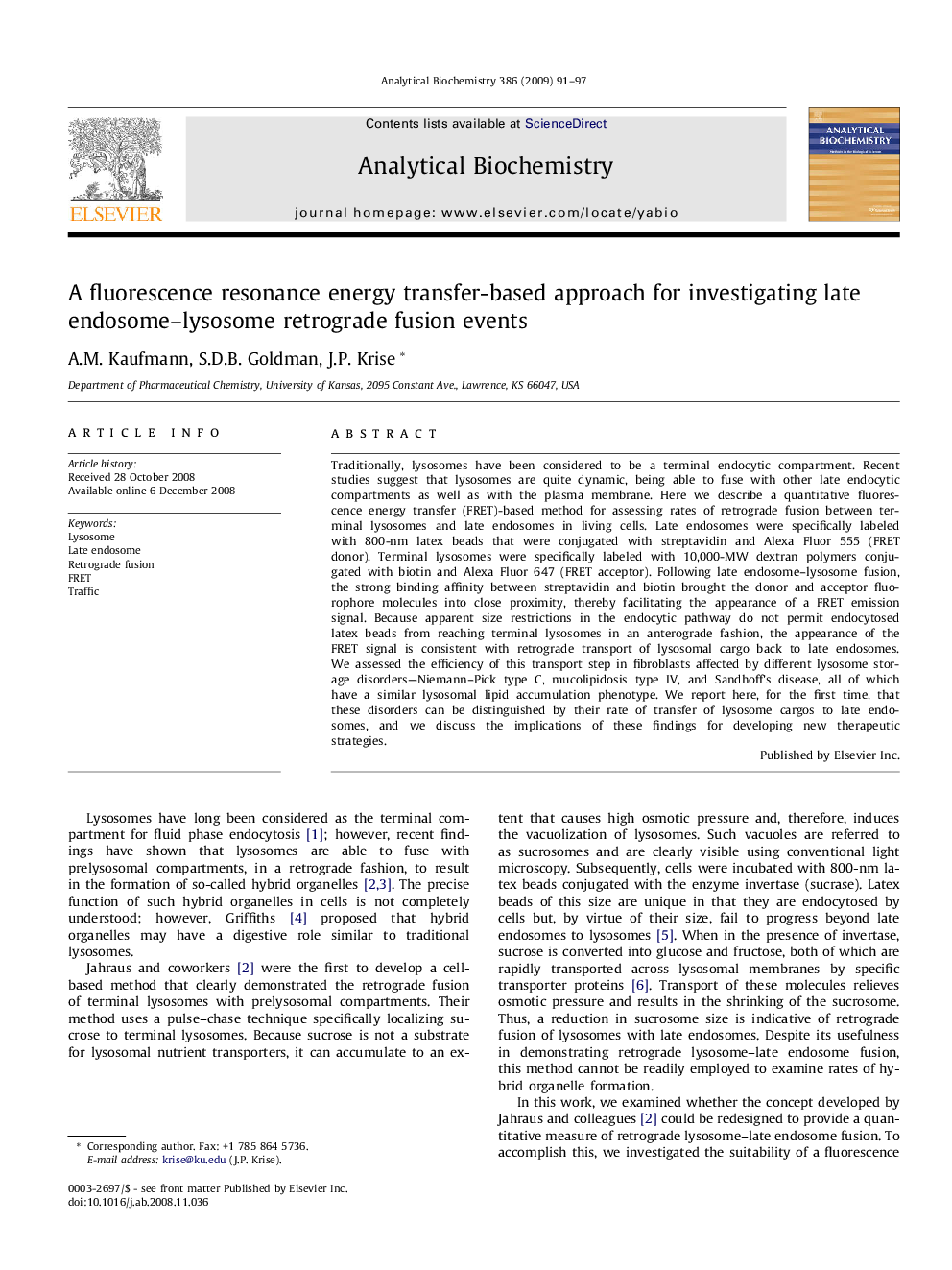| Article ID | Journal | Published Year | Pages | File Type |
|---|---|---|---|---|
| 1177103 | Analytical Biochemistry | 2009 | 7 Pages |
Traditionally, lysosomes have been considered to be a terminal endocytic compartment. Recent studies suggest that lysosomes are quite dynamic, being able to fuse with other late endocytic compartments as well as with the plasma membrane. Here we describe a quantitative fluorescence energy transfer (FRET)-based method for assessing rates of retrograde fusion between terminal lysosomes and late endosomes in living cells. Late endosomes were specifically labeled with 800-nm latex beads that were conjugated with streptavidin and Alexa Fluor 555 (FRET donor). Terminal lysosomes were specifically labeled with 10,000-MW dextran polymers conjugated with biotin and Alexa Fluor 647 (FRET acceptor). Following late endosome–lysosome fusion, the strong binding affinity between streptavidin and biotin brought the donor and acceptor fluorophore molecules into close proximity, thereby facilitating the appearance of a FRET emission signal. Because apparent size restrictions in the endocytic pathway do not permit endocytosed latex beads from reaching terminal lysosomes in an anterograde fashion, the appearance of the FRET signal is consistent with retrograde transport of lysosomal cargo back to late endosomes. We assessed the efficiency of this transport step in fibroblasts affected by different lysosome storage disorders—Niemann–Pick type C, mucolipidosis type IV, and Sandhoff’s disease, all of which have a similar lysosomal lipid accumulation phenotype. We report here, for the first time, that these disorders can be distinguished by their rate of transfer of lysosome cargos to late endosomes, and we discuss the implications of these findings for developing new therapeutic strategies.
